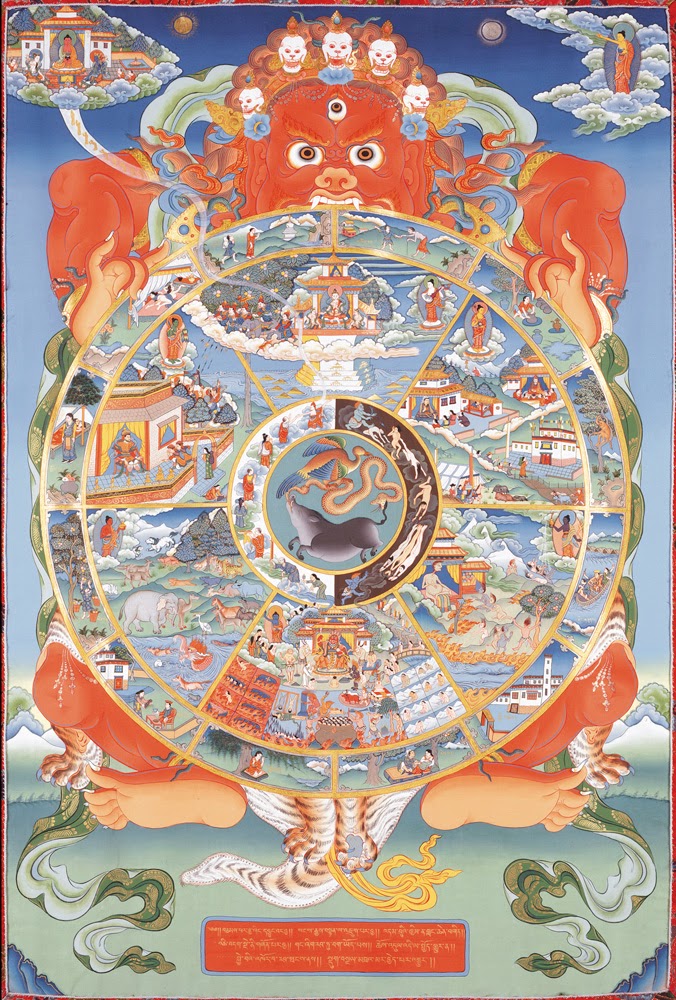Deeply contemplate the certainty of karma
and the constant suffering of samsara.
See beyond the cycle of lives.
The Three Principles of the Path
and the constant suffering of samsara.
See beyond the cycle of lives.
The Three Principles of the Path
Sensual gluttony is a gate to suffering
And is not worthy of a lucid mind.
Inspire me to realize the shortcomings of samsara
And to give birth to the great wish for blissful freedom.
The Foundation of All Perfections
And is not worthy of a lucid mind.
Inspire me to realize the shortcomings of samsara
And to give birth to the great wish for blissful freedom.
The Foundation of All Perfections
Wretched man that I am!
Who will rescue me from this body of death?
-- Romans 7:24
Who will rescue me from this body of death?
-- Romans 7:24
Painted on the outside wall of Tibetan Buddhist monasteries and temples is a "Wheel of Existence" (bhavachakra), a symbolic representation of samsara, the endless cycle of birth, death and suffering. As shown below, this comprises six "realms" or mental/emotional states, divided into three "lower" and three "upper" realms:
- The hell realm (naraka) of extreme suffering of heat, cold, mental and physical distress
- The realm of hungry ghosts (pretas), who suffer unquenchable hunger and thirst
- The realm of animals, who suffer from being killed and eaten, and from ignorance which keeps them in thrall to samsara
- The realm of humans, who suffer from birth, disease, old age and death, but who have the opportunity to get off the wheel thanks to the Ten Endowments
- The realm of samsaric gods (devas), who enjoy great pleasure but suffer from impermanence and death
- The realm of demi-gods (asuras), who suffer from their own jealousy, which leads them to constantly make war on the devas - and constantly lose!
In the center of the wheel are the Three Poisons, represented by three animals who provide the energy to keep the wheel turning: the pig (ignorance), the snake (aversion) and the rooster (attachment). On the inner rim of the hamster cage are the sentient beings, propelled downward by negative karma (their actions while under the influence of the poisons) and upward by positive karma (actions taken as they free themselves from the poisons). Around the outer rim are the "twelve stages of dependent origination," showing how beings are trapped in the cycle through ignorance. The whole wheel is held in the grip of impermanence, usually represented as Yama, the Lord of Death.
But look! Above the wheel there is a Buddha pointing at the moon, a symbol of freedom, clarity and peace. In some representations, as in the one below, there is also a "Pure Land" where beings who have not been able to reach full liberation can go to receive final instructions from Buddha Amitabha - the closest thing to the Christian idea of Heaven.
For the law of the Spirit of life in Christ Jesus
hath made me free from the law of sin and death.
-- Romans 8:3
hath made me free from the law of sin and death.
-- Romans 8:3
